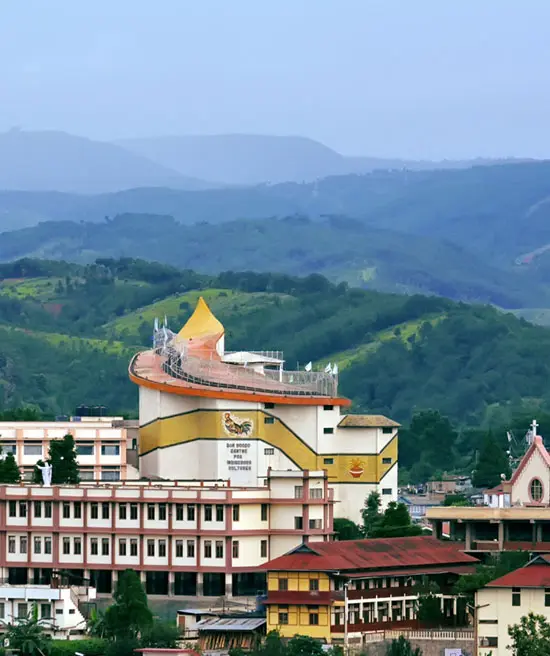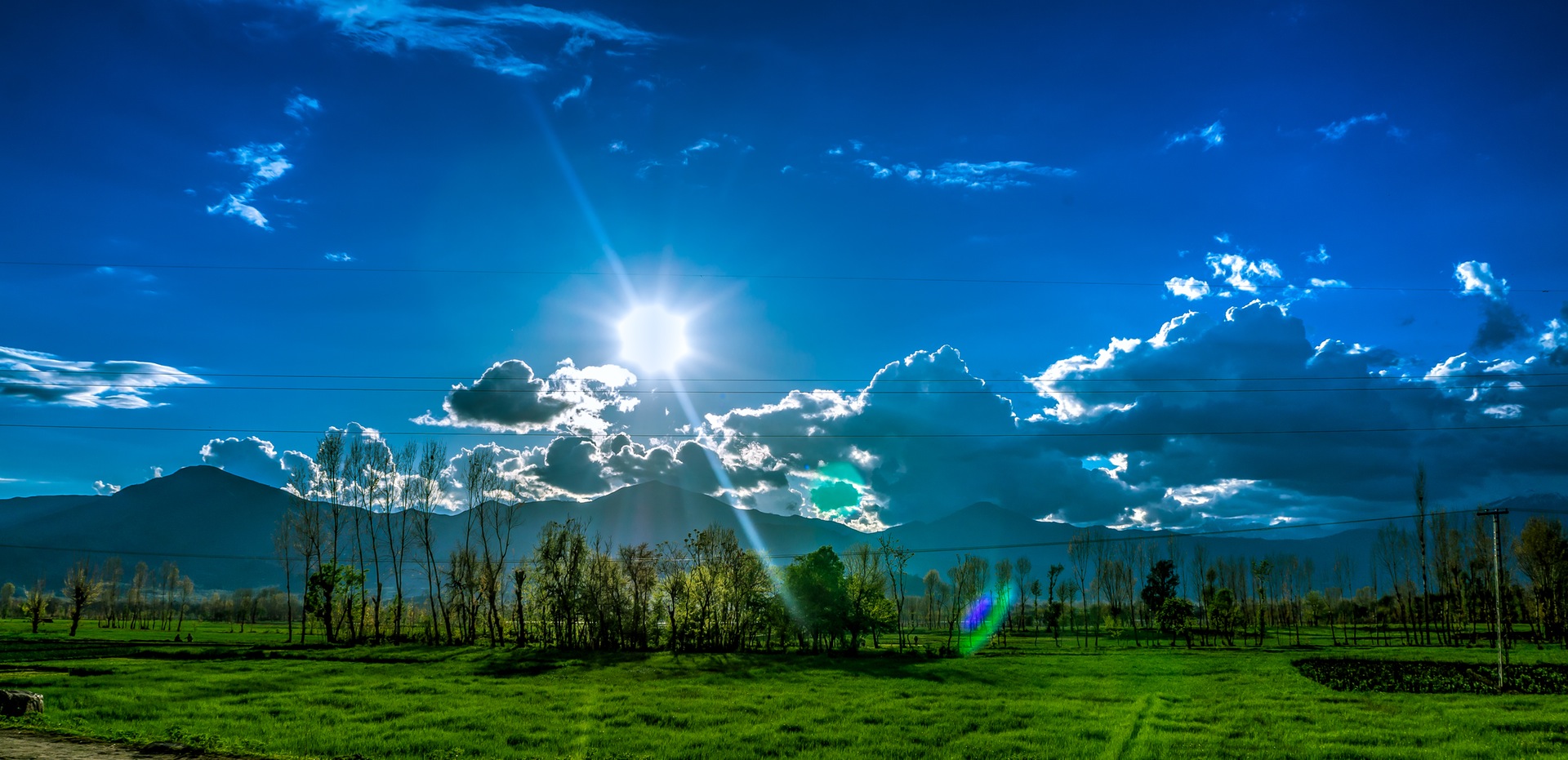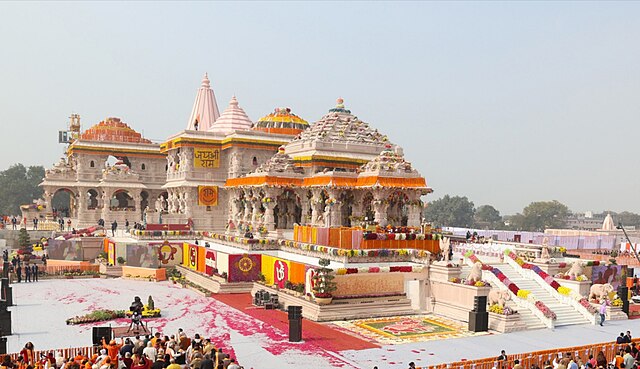Don Bosco Museum: A Window into Indigenous Culture

Strong 8k brings an ultra-HD IPTV experience to your living room and your pocket.
The Don Bosco Museum, located in Shillong, Meghalaya, is a unique museum that offers an immersive experience of the indigenous cultures of Northeast India. The museum is dedicated to preserving and showcasing the rich cultural heritage of the people living in this region. With its diverse collection of artifacts, artworks, and exhibits, the museum provides visitors with a deep understanding of the traditions, customs, and history of the various tribes of Northeast India. The museum is not just a place to view exhibits but an educational journey that allows people to learn about the rich diversity of this part of the country. The Don Bosco Museum is a must-visit for anyone interested in learning more about the fascinating cultures of Northeast India.
The History Behind the Museum
The Don Bosco Museum was established in 2003 by the Salesian Society, a Roman Catholic religious organization. The museum’s foundation was laid with the aim of preserving and promoting the diverse cultures of Northeast India, many of which were at risk of fading away due to modernization. The museum’s creator, Father George, was deeply passionate about the indigenous communities and their unique ways of life. He envisioned the museum as a space where people from all over the world could come to appreciate and learn about the rich cultural heritage of the region. Over the years, the museum has become one of the most important cultural landmarks in Shillong and Northeast India, attracting visitors from both India and abroad.
Exploring the Collections
The Don Bosco Museum boasts an extensive collection of artifacts and exhibits that represent the traditions, customs, and lifestyle of the indigenous tribes of Northeast India. The museum is divided into several floors, each dedicated to a different aspect of the region’s culture. There are displays showcasing traditional clothing, musical instruments, tools, handicrafts, and religious artifacts. These collections highlight the unique diversity of the tribes and their distinct cultures, each with its own language, customs, and beliefs. The museum also features galleries that focus on the region’s flora and fauna, showcasing the natural beauty that influences the life and traditions of the indigenous people. Visitors can explore the museum's many exhibits to gain a better understanding of the way of life in this vibrant region of India.
Architecture of the Museum
The Don Bosco Museum is a masterpiece in itself, with its modern architectural design that blends seamlessly with the cultural significance it holds. The building is a six-story structure, designed to resemble a traditional indigenous tribal house. Each floor is dedicated to a specific theme, allowing for an organized and easy exploration of the museum’s rich collections. The museum’s architecture is both functional and aesthetic, designed to complement the exhibits inside while showcasing the cultural identity of the indigenous people. Large windows allow plenty of natural light to flood the galleries, making it a bright and welcoming space for visitors. The museum’s design reflects the spirit of Northeast India—diverse, unique, and deeply connected to nature. It is a fitting space for showcasing the richness of the region’s traditions and culture.
Unique Exhibits at the Don Bosco Museum
One of the most unique aspects of the Don Bosco Museum is its wide variety of exhibits that represent the diverse tribes of Northeast India. One of the most impressive displays is a collection of traditional tribal clothing, showcasing the intricate craftsmanship and colorful patterns that define each tribe. Another standout feature of the museum is its collection of musical instruments, which highlights the important role of music in the daily life and ceremonies of the indigenous people. Visitors can also explore displays featuring tools and weapons, such as bows and arrows, that have been used for centuries by the tribes of the region. Religious artifacts, including idols, masks, and prayer items, provide insight into the spiritual beliefs and practices of the indigenous communities. These unique exhibits offer a glimpse into the history and way of life of the people of Northeast India.
The Museum's Cultural Significance
The Don Bosco Museum holds significant cultural value as it serves as a platform for the preservation and celebration of the indigenous cultures of Northeast India. The museum is a source of pride for the local communities, as it helps preserve their heritage for future generations. By displaying the art, traditions, and history of these tribes, the museum fosters an appreciation for the diversity that exists within India. It also provides a space for dialogue and exchange between the indigenous communities and the wider world, helping to bridge cultural gaps and promote understanding. The museum is not only an educational tool but also a symbol of respect for the unique ways of life that have existed for centuries in Northeast India. Its role in promoting cultural awareness makes it a vital institution in the region.
The Role of the Museum in Education
The Don Bosco Museum plays an important role in educating visitors about the rich cultural heritage of Northeast India. Schools, colleges, and tourists from around the world visit the museum to gain knowledge about the indigenous people and their traditions. The museum offers guided tours that provide in-depth information about the exhibits and the history behind them. Educational programs and workshops are also conducted regularly to engage visitors and deepen their understanding of the region’s diverse cultures. The museum’s exhibits are designed to be both informative and engaging, with interactive displays that capture the attention of visitors of all ages. The educational value of the museum extends beyond its walls, as it encourages visitors to learn more about the indigenous cultures and become advocates for their preservation.
Importance of the Museum to Tourism
The Don Bosco Museum has become an important part of Shillong’s tourism industry, attracting visitors from around the world. Its cultural and historical significance makes it a must-see destination for anyone visiting the region. The museum offers a unique insight into the tribal cultures of Northeast India, which are not widely known outside the region. By promoting the diverse cultural heritage of the area, the museum has played a key role in shaping the tourism landscape of Shillong and Meghalaya. Visitors to the museum can learn about the traditions, customs, and lifestyles of the indigenous communities, helping to promote cultural tourism in the region. As the museum continues to grow in popularity, it is helping to raise awareness about the importance of preserving indigenous cultures and supporting local communities through tourism.
Visiting the Don Bosco Museum
A visit to the Don Bosco Museum is a must for anyone traveling to Shillong. The museum is located in the heart of the city and is easily accessible by both locals and tourists. The museum’s spacious design allows for a comfortable and enjoyable visit, with plenty of room to explore the various exhibits. It is open throughout the week, with regular hours for visitors to explore its collections. The museum also has a gift shop where visitors can purchase traditional crafts and souvenirs made by local artisans. Visitors are encouraged to take their time to explore the exhibits and immerse themselves in the fascinating cultures of Northeast India. The museum is a great place to learn, appreciate, and experience the richness of the region’s traditions, making it a valuable part of any trip to Shillong.
The Museum’s Future Plans
The Don Bosco Museum is constantly evolving and expanding to better serve the needs of its visitors. Plans for future development include expanding the museum’s collection, improving facilities, and enhancing educational programs. There are also plans to increase the museum’s outreach programs, which will help raise awareness about the preservation of indigenous cultures both locally and internationally. The museum is also working on creating more interactive exhibits and digital displays to engage visitors in new and innovative ways. By continuing to grow and evolve, the Don Bosco Museum aims to remain a vital institution for the preservation and promotion of Northeast India’s indigenous cultures. With its commitment to education, culture, and heritage, the museum is poised to play an even more important role in the region’s future.
Conclusion: A Cultural Treasure of Northeast India
The Don Bosco Museum is a true cultural treasure that offers visitors a chance to explore the diverse and vibrant cultures of Northeast India. From its fascinating exhibits to its stunning architecture, the museum provides a comprehensive and engaging experience for anyone interested in learning about the region's rich history and traditions. It serves as both a cultural landmark and an educational resource, helping to preserve the indigenous heritage of the region for future generations. For anyone visiting Shillong or Northeast India, the Don Bosco Museum is a must-visit destination that provides invaluable insight into the region’s culture and way of life. The museum’s ongoing efforts to educate and inspire visitors make it a key institution in the cultural landscape of the region, ensuring that the traditions of the indigenous people will continue to be celebrated for years to come.
Note: IndiBlogHub features both user-submitted and editorial content. We do not verify third-party contributions. Read our Disclaimer and Privacy Policyfor details.




